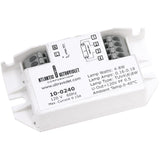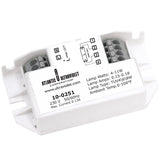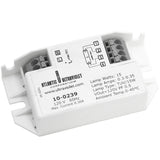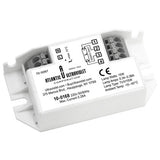What is the Voltage of Fluorescent and Ultraviolet Bulbs?
Posted by Dave on for ProLampSales
You may have noticed that the specifications for fluorescent tubes, compact fluorescent bulbs, and ultraviolet lamps provide watts, but almost never volts. Why not?
Ballasts, invisible inside the fixture, are required for all fluorescent bulbs to operate. Ballasts modify the line voltage they are connected to (120V, 277V, etc.) so the proper current is supplied to the bulb. Because ballasts are hidden, it is easy to assume the bulbs are simply operated directly off line voltage from the building. Not so, as the voltage at the lamp socket needs to be regulated. That is the job of the ballast.
Screw-in CFL bulbs, commonly used in households and for some specialty equipment, can cause some confusion with consumers. These bulbs are no different than other fluorescents, though, and they need a ballast to operate. However, they are manufactured with the ballast integrated into the bulb itself. There is often a larger base at one end of a screw-in CFL bulb that contains the ballast. It is located between the screw-in base and the tubes (most commonly spiral shaped in homes).
The answer to our question is now clear. The voltage of a CFL or fluorescent light bulb is irrelevant for the consumer who is simply buying a replacement bulb for an existing fixture. The ballast in the fixture takes care of it.
For new equipment, installers often choose fixtures that come with a ballast to operate the bulbs. Many fluorescent ballasts are now universal voltage, meaning they can be run on line voltage from 120 to 277 volts. For international or industrial use, 347-480V ballasts are available.
Even more complicated is the fact that higher output fluorescent or ultraviolet bulbs (often used in tanning beds or municipal water purification equipment) may not have an available ballast at the 120V level, requiring 208 or higher.
Fluorescent ballasts are only rated and tested to run certain lamps, so matching the ballast and bulb is essential. In some cases, a ballast may operate a bulb that is not on its specification sheet, but could over- or under-drive the lamp. Or the lamp was just unknown to the manufacturer at the time the ballast was developed and the lamp will run fine.
Other light sources require their own type of ballasts, including excimer lamp ballasts, HID ballasts, and LED drivers.
This issue makes it easier to replace light bulbs, but can cause even more confusion once the ballast goes bad. It is often the case that, by the time a ballast needs to be replaced, the specific ballast in the fixture has been long discontinued by the manufacturer. Thankfully, most manufacturers keep lists of discontinued and recommended replacements, although there may not be a perfect match for an old power supply.
- Posted in Ballasts, Fluorescent, Ultraviolet Light
Featured Products (View All)
0 Comments




